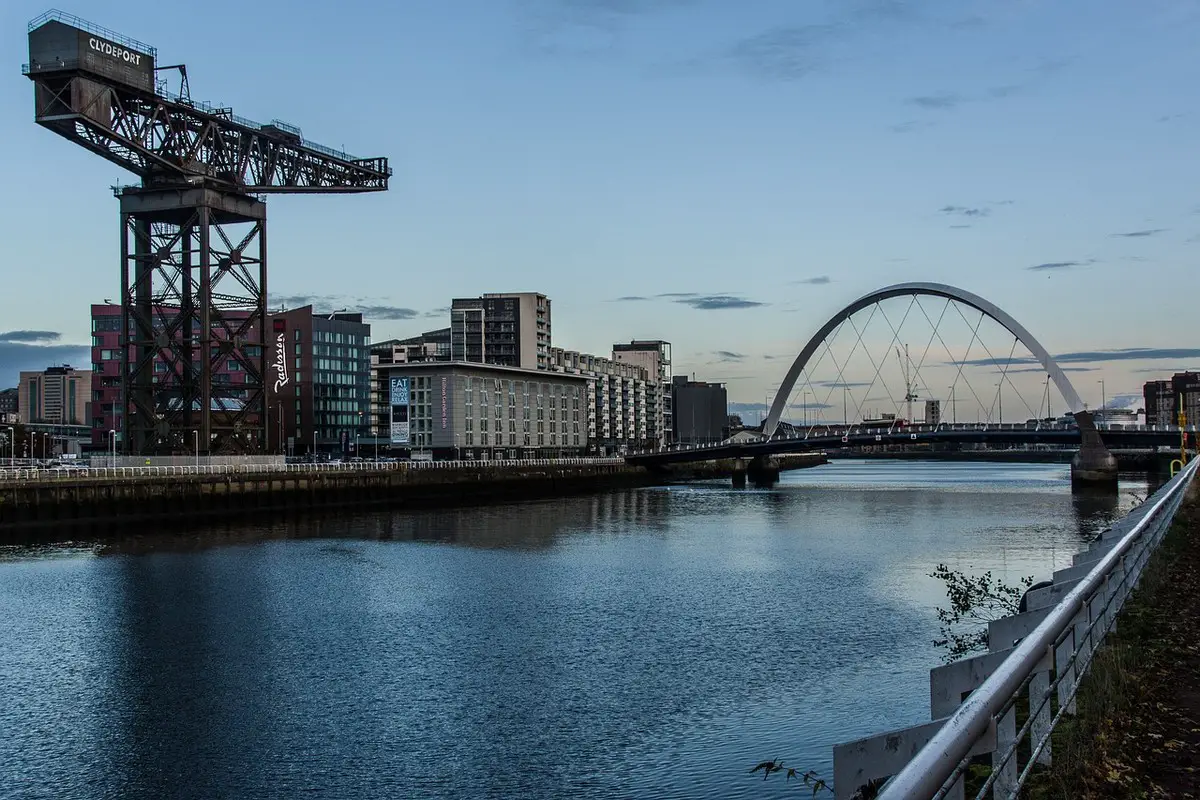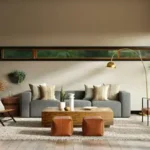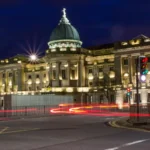Glasgows architecture wonders, Strathclyde architectural design, Scottish city buildings
A Look At Glasgow’s Architecture Wonders
25 January 2024
Visiting the most striking architecture is often the best way to explore and learn about a city. It’s a tour through history as much as it is through art. A city’s architecture also showcases its inhabitants’ dreams and aspirations as it’s always envisioned based on how it will often be used for centuries.
This applies to Glasgow’s architecture as much or more than to other European cities. This article will explore the great wonders of Glasgow’s architecture and how it changed the City. We will cover buildings from different eras, styles, and purposes.
Riverside Museum
Riverside Museum was once a shipyard in the Glasgow Harbor, and now it features the masterwork of the UK’s most celebrated architect, Dame Zaha Hadid. It won the 2013 European Museum of the Year award. The museum was built to fit and celebrate the environment it’s in.
The main exhibition area is flooded by light flowing through clear glass covering much of its front, where the roof zigzags its way around, while the whole facade is covered in over 24,000 zinc panels. The museum showcases 3000 exhibit pieces, all of which are about the history and science of transportation.
People’s Palace and Winter Gardens
In contrast, People’s Palace and Winter Gardens are examples of Victorian architecture. The Victorian age has left its mark on Glasgow, and many architectural masterpieces represent the period. A beautiful winter garden features an elaborately painted domed roof.
The People’s Palace is also known for the majestic Doulton Fountain in its front. The fountain stands an impressive 46 feet high and is the largest terracotta fountain in the world. The Palace opened in 1898 and was restored in 1990 when the domed roof was added.
Alea Glasgow
At a time when all types of Bitcoin roulette games can be found online and in the app form, there’s still something classy and exciting about visiting a beautiful and impressively designed casino. Alea Glasgow is one such venue known for its modernist architecture and amazing service.
The casino boasts a firm, solid concrete structure adorned with grey and gold hues, adding a modernist touch to the experience. The casino’s interior mimics the look and feel of a more well-known Las Vegas establishment. The baroque and somewhat overwhelming aesthetic is utilitarian and part of the casino experience.
Glasgow City Chambers
.Glasgow City Chambers is another remarkable building from the Victorian era. In fact, the Chambers were opened by Queen Victoria herself in 1889. It was made based on the prize-winning design by one William Young, who in turn was inspired by his trip to Rome.
The building stands large and grand and is, therefore, one of the most famous architectural pieces of the City, which was its main goal. It features marble staircases and gold leaf everywhere you look. The building is often used as a movie set, and it has played the Vatican in many popular movies due to its style and grandeur.
The Michael Library
Moving on from the Victorian to Edwardian era – the Michael Library presents its finest example. It’s one of the largest public libraries in Europe. Andrew Carnegie and the library placed the first stone, which opened in 1911. The library serves over 600.000 members.
Atop its distinctive copper façade is a green dome on which stands a bronze statue by Thomas Clapperton, often referred to as Minerva, the god of wisdom. Additional extensions of the building were made in the neo-Greek style. The library is open to visitors and has guided tours.
Glasgow Cathedral
Glasgow Cathedral is one of the finest pieces of medieval architecture, located on Castle Street alongside other oldest buildings in the City. Most of the medieval churches didn’t survive the Reformation of the 16th century, but the Cathedral, built between 1136 and 1484 AD, luckily remains.
The nave is one of the finest examples of works from this era, with high ceilings and stained-glass windows. It features a pulpit, one of the best-carved stone works from the era, that acts as a screen between the nave and the choir. It’s the largest church in Scotland.
Kelvingrove Art Gallery and Museum
Baroque also left its mark on the Glasgow architecture, and if you notice a grand building made from red brick, chances are it’s from this era. The gallery and museum now features 22 themed art galleries and is the most visited UK museum outside of London.
The magnificent walls of the Central Hall are easy to notice, and the Hall itself can seat around 3,000 people. Its central piece is a splendid pipe organ from the same period. The surrounding park is from the Victorian era, and it was designed according to the practices of the time. It’s about 85 acres and features a tennis court.
Tolbooth Steeple
All that remains of the Tolbooth Steeple, a building made in 1626 and designed by John Boyd, are its bells. In the 17th century, this was the City Chamber until the Victorian one was built. At the same time, the building served as a city prison and the clerk’s office.
Over the years, it fell into disrepair and was finally torn down in 1921. The steeple was restored and now remains a tourist attraction and a reminder of Glasgow’s long and rich history. It includes some gruesome parts, such as the hangings that took place in front of the prison.
University of Glasgow
Glasgow University is one of the most visited places in Scotland, and there’s a reason why that’s the case. It’s a striking example of Gothic revival architecture, which stands atop the city and draws attention to itself—the oldest of the buildings comprising the complex dates back to 1451.
Gilmorehill is the most striking part of the University. It was designed by one of England’s most prolific architects and a master in Gothic-revival architecture, Sir Gilbert Scot. The building features a bell tower that offers some of the city’s best views.
St Andrews in the Square
St. Andrew Square building is a great example of neoclassical architecture. It was built after the Reformation as the first Presbyterian Church in the city.
The building now houses Glasgow’s Centre for Scottish Culture. Bonnie Prince Charlie, with his Jacobite army is thought to have camped within its construction site after his failed invasion of England in 1745. The church is also known for its place in the history of aviation – from its yard, Vicenzo Lunardi took off for Hamilton and Lanark in a hot air balloon.
Theatre Royal
Glasgow’s theater is a prime example of Victorian architecture. It first opened in 1867 on Hope Street and is home to the Scottish Ballet and Scottish Opera. It’s, therefore, the oldest theater in the city and the oldest one still running in Scotland.
Originally built by George Bell, the first fire occurred only 12 years after completion. Another of England’s famous architects was brought in to carry out renovation works thereafter. The auditorium designed by Charles Phipps during the later parts of the 19th century still stands today.
Glasgow architecture showcases a mixture of different styles and aesthetics. It’s also a way to experience the history of the city and its ever-changing culture.
Comments on this guide to Glasgows Architecture Wonders article are welcome.
Glasgow Architecture
Major Strathclyde Building Designs – selection:
Historic Glasgow incl. Charles Rennie Mackintosh + Alexander Greek Thomson
Corinthian Restaurant & Club, Ingram St, Merchant City
++
Strathclyde Building Designs
Contemporary Glasgow Property Designs – recent architectural selection below:
Glasgow Custom House Development
Comments / photos for the A Look At Glasgow’s Architecture Wonders – Strathclyde buildings page welcome.




